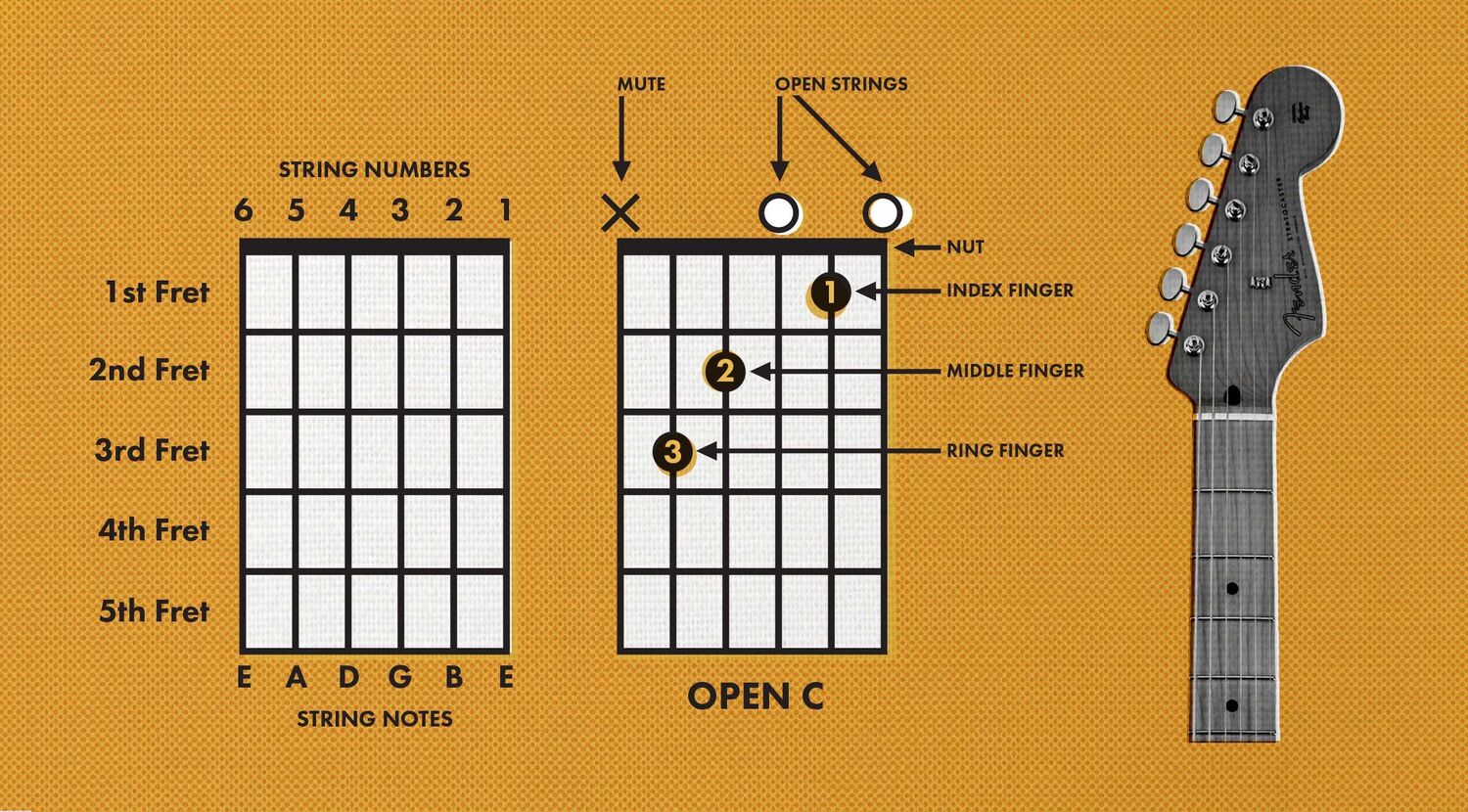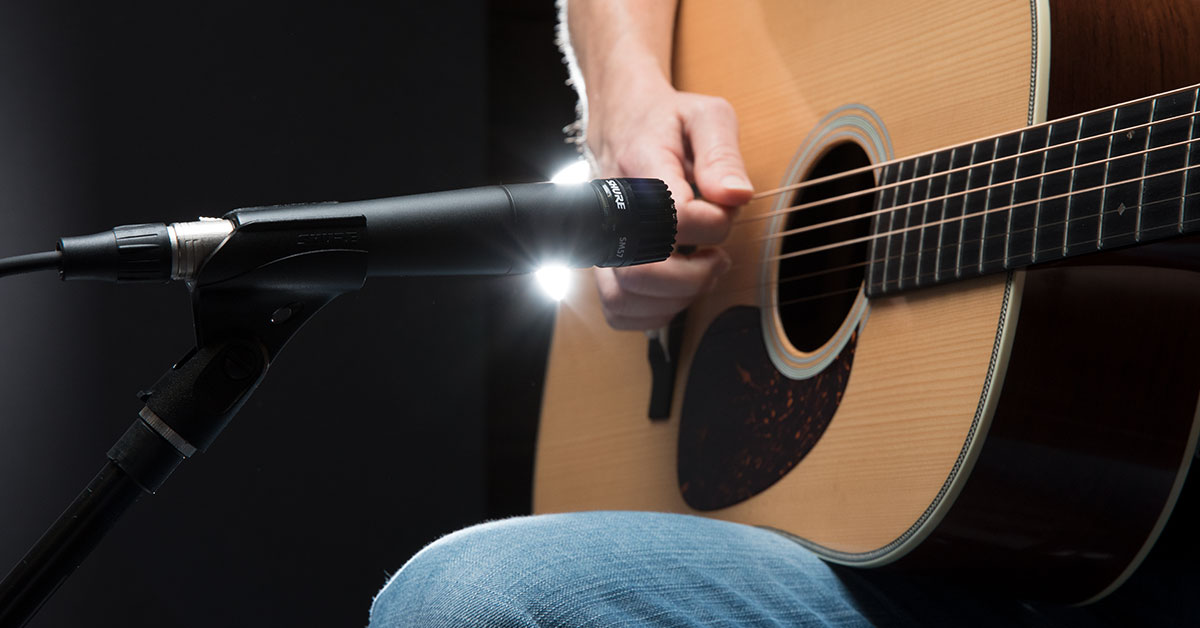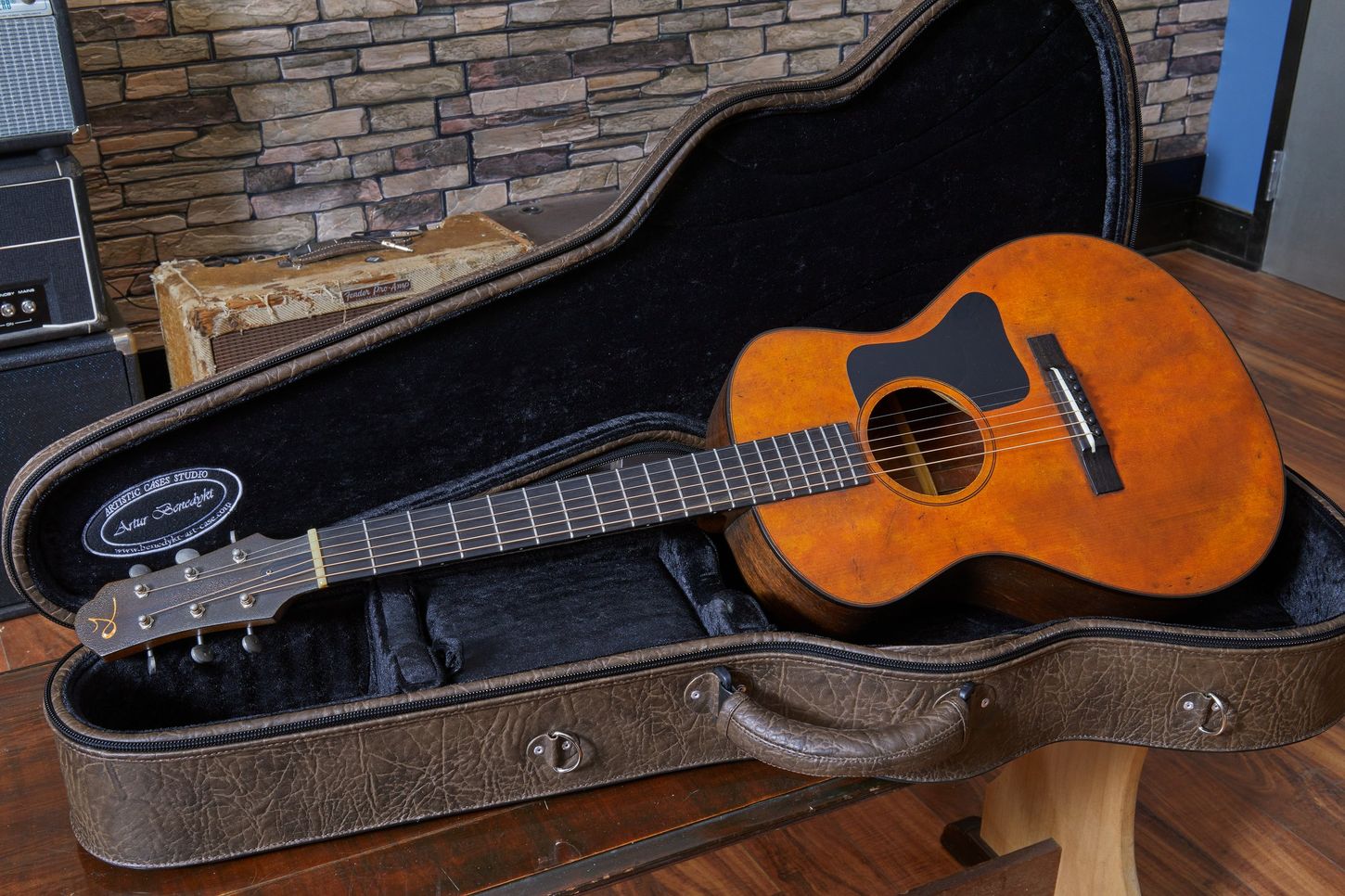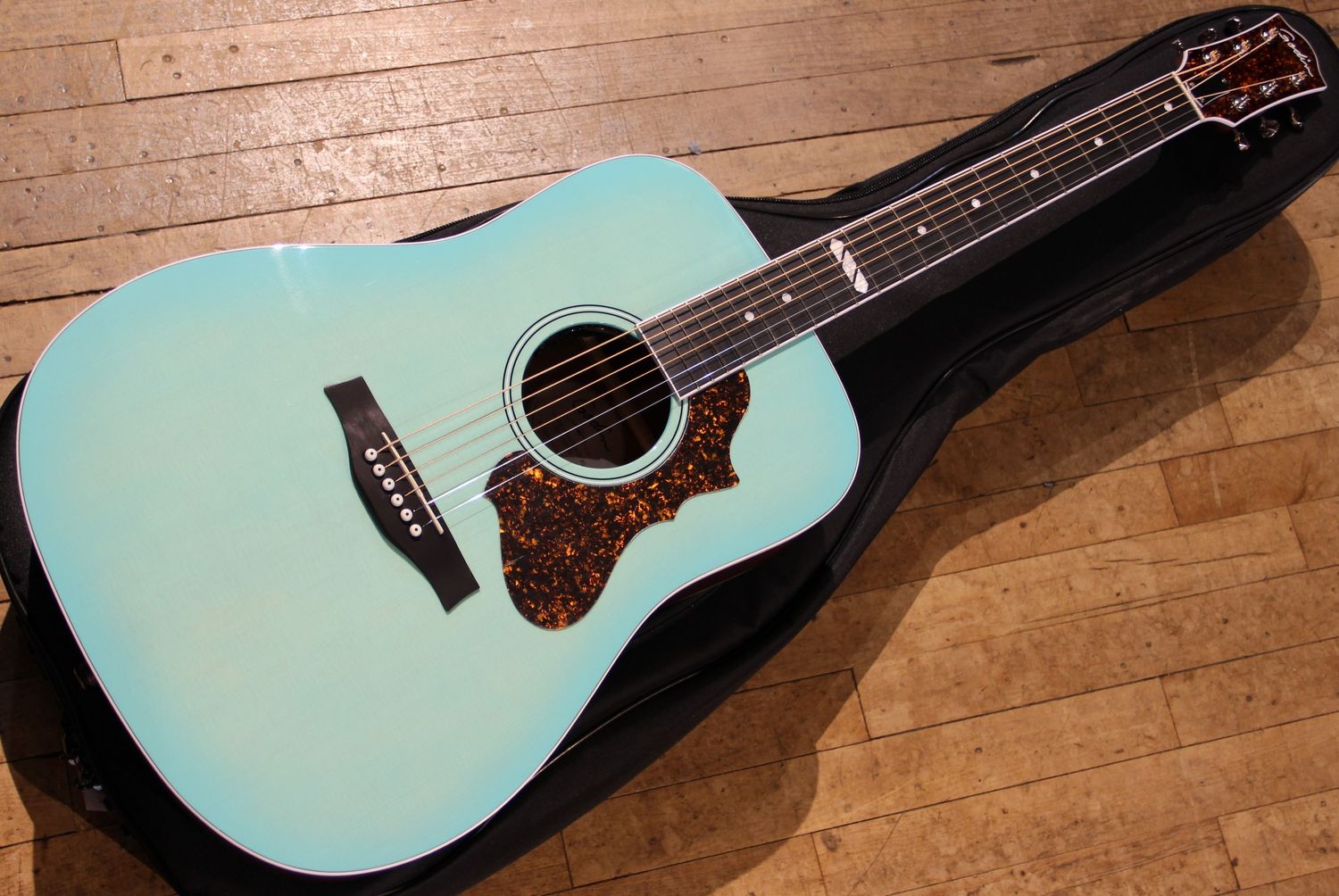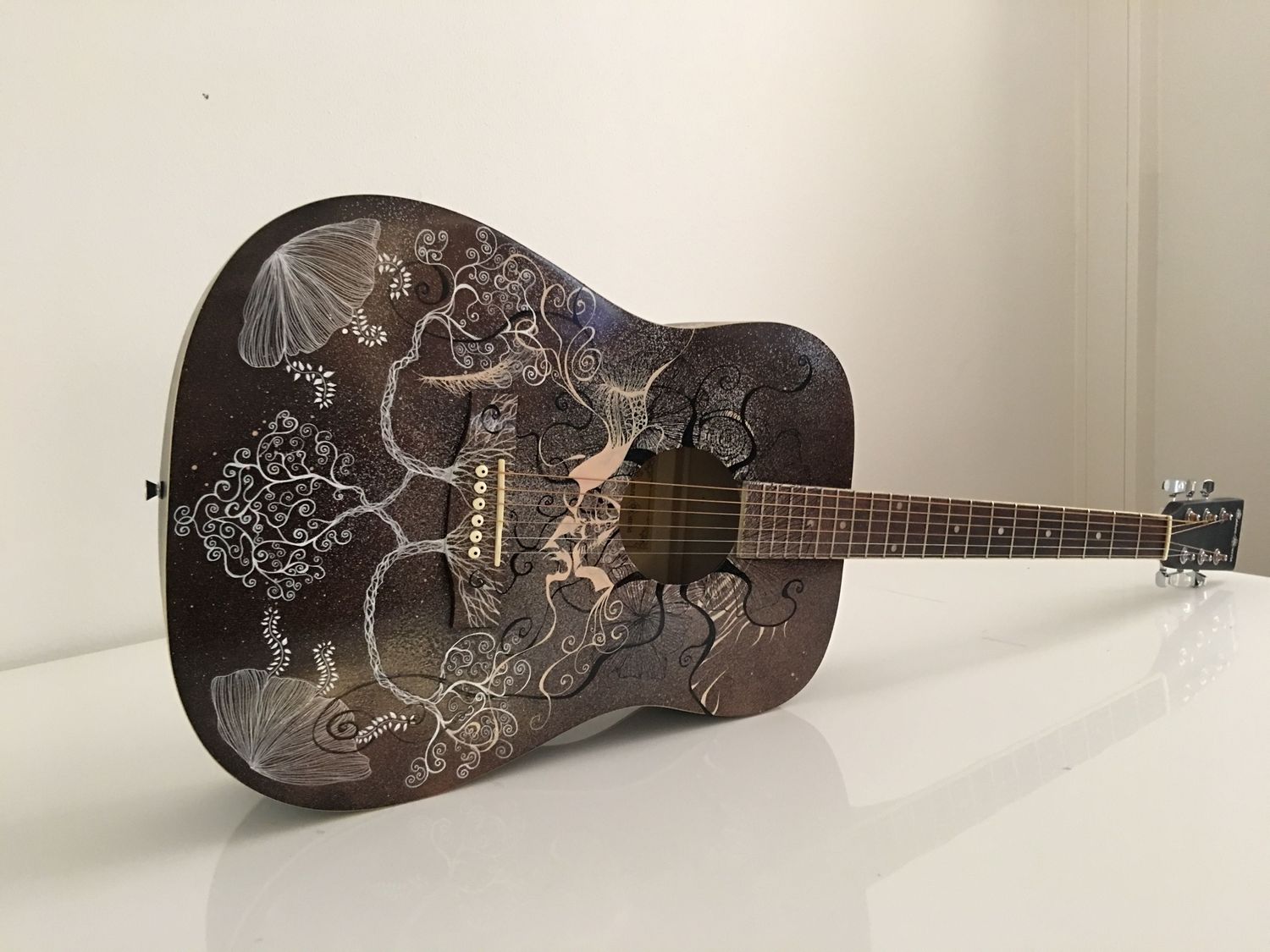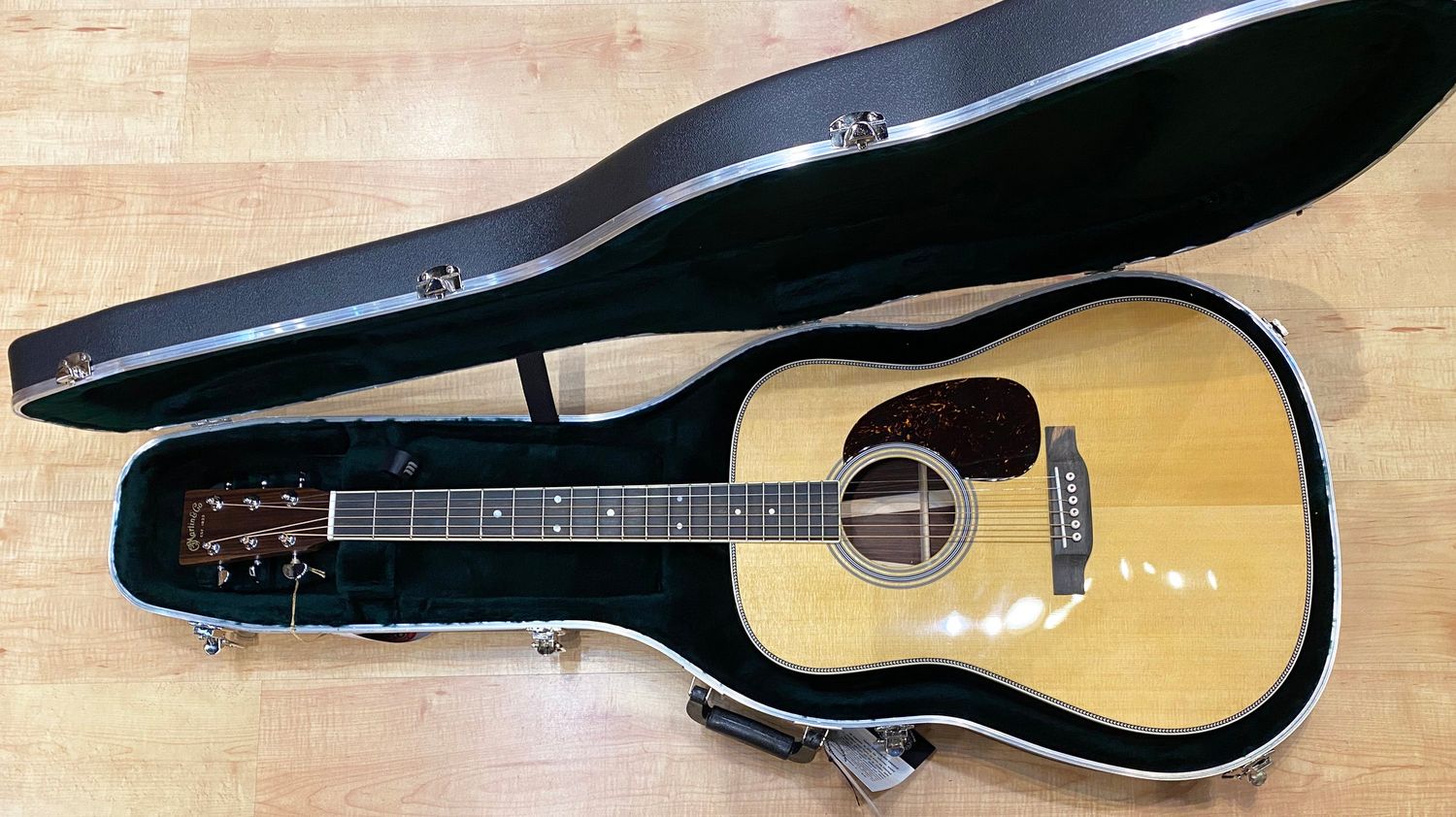Home>Production & Technology>Acoustic>How To Read Tab For Acoustic Guitar


Acoustic
How To Read Tab For Acoustic Guitar
Published: March 12, 2024
Learn how to read tab for acoustic guitar and play your favorite songs with our step-by-step guide. Master the basics and start strumming today!
(Many of the links in this article redirect to a specific reviewed product. Your purchase of these products through affiliate links helps to generate commission for AudioLover.com, at no extra cost. Learn more)
Table of Contents
Introduction
Learning to read tablature for acoustic guitar is an essential skill for any aspiring guitarist. Tablature, often abbreviated as "tab," provides a straightforward way to understand and play music on the guitar without the need for traditional sheet music notation. Whether you're a beginner picking up the guitar for the first time or an experienced player looking to expand your repertoire, mastering the art of reading tablature can open up a world of musical possibilities.
In this comprehensive guide, we will delve into the intricacies of reading tablature for acoustic guitar, breaking down the fundamental elements and providing valuable insights to help you navigate this invaluable tool with confidence. From understanding the basic structure of tablature to deciphering chord diagrams and intricate picking patterns, we will equip you with the knowledge and skills needed to interpret and play a wide range of music on your acoustic guitar.
By the end of this guide, you will have a solid grasp of how to read tablature for acoustic guitar, empowering you to explore new songs, learn complex arrangements, and express your musical creativity with greater fluency. So, grab your acoustic guitar, get comfortable, and let's embark on this enriching journey into the world of guitar tablature.
Understanding the Basics of Guitar Tablature
Tablature, commonly known as "tab," is a widely used notation system that provides guitarists with a straightforward method for reading and playing music on the instrument. Unlike traditional sheet music, which utilizes standard notation to represent musical pitches and rhythms, tablature offers a visual representation of the guitar's fretboard, allowing players to easily identify where to place their fingers to produce specific notes, chords, and melodies.
At its core, guitar tablature consists of six horizontal lines, each representing a string on the guitar. The top line corresponds to the highest-pitched string (usually the high E string), while the bottom line represents the lowest-pitched string (typically the low E string). This layout mirrors the physical arrangement of the guitar strings, providing a clear and intuitive reference for fretting and picking techniques.
In addition to the string lines, numbers are used to indicate which fret to press down on a particular string. When a number appears on a specific string line, it signifies the fret where the corresponding note should be played. For instance, if the number "3" is displayed on the third line (G string), it indicates that the player should press down on the third fret of the G string to produce the desired note.
Furthermore, guitar tablature may include additional symbols and notations to convey various playing techniques, such as slides, bends, hammer-ons, pull-offs, and vibrato. These symbols enrich the tablature by providing valuable insights into the nuanced articulations and embellishments that contribute to the unique expressiveness of acoustic guitar music.
By familiarizing yourself with the basic structure of guitar tablature and understanding how it correlates to the guitar's fretboard, you can effectively interpret and execute musical passages with precision and clarity. This foundational knowledge forms the cornerstone of reading tablature for acoustic guitar, setting the stage for further exploration and mastery of this versatile notation system.
Reading the Strings and Frets
When delving into the realm of guitar tablature, understanding how to read the strings and frets is paramount. The six horizontal lines that comprise the core structure of tablature represent the six strings of the acoustic guitar. Each line corresponds to a specific string, with the top line symbolizing the high E string and the bottom line representing the low E string. This visual alignment mirrors the physical layout of the guitar, providing a familiar reference point for guitarists as they navigate the tablature.
In conjunction with the string lines, numbers are utilized to denote the frets where notes or chords should be played. When a number appears on a particular string line, it indicates the fret where the corresponding note is to be fretted. For instance, if the number "3" is positioned on the third line (G string), it signifies that the player should press down on the third fret of the G string to produce the intended note. This straightforward representation facilitates the translation of musical ideas into tangible finger placements on the fretboard, enabling guitarists to execute melodies and chords with precision.
As guitarists familiarize themselves with reading tablature, they develop an intuitive understanding of how the string and fret notations translate to the physical act of playing the instrument. This process involves mentally mapping the tablature to the guitar's fretboard, allowing players to seamlessly navigate between different fret positions and strings. Through consistent practice and exposure to diverse tablature arrangements, guitarists hone their ability to swiftly interpret and execute musical passages, gradually internalizing the visual cues presented in the tablature.
Furthermore, as players delve into more complex tablature arrangements, they encounter a diverse array of symbols and notations that enrich the tablature's expressiveness. These symbols may denote techniques such as slides, bends, hammer-ons, pull-offs, and vibrato, each contributing to the nuanced articulation and emotive quality of the music. By integrating these techniques into their playing, guitarists infuse their interpretations with depth and character, transcending the literal representation of notes and fret positions to convey the subtleties of expression inherent in acoustic guitar music.
In essence, mastering the art of reading the strings and frets in guitar tablature empowers guitarists to unlock the musical potential of the acoustic guitar, enabling them to interpret and perform a diverse repertoire of songs with confidence and artistry. This foundational skill forms the bedrock of proficiency in reading tablature, laying the groundwork for a fulfilling and enriching journey into the world of acoustic guitar music.
Identifying Chords and Notes
In the realm of guitar tablature, the ability to identify chords and notes is a fundamental skill that empowers guitarists to interpret and play a diverse range of music on the acoustic guitar. As players delve into the intricacies of tablature, they encounter notations that represent individual notes, chord formations, and melodic passages, each contributing to the rich tapestry of musical expression.
When navigating tablature, chords are often depicted as stacked numbers, indicating the fret positions across multiple strings that collectively form a specific chord shape. For instance, a basic open C major chord may be represented in tablature as follows:
e|—0—|
B|—1—|
G|—0—|
D|—2—|
A|—3—|
E|—x—|
In this example, the numbers align with the frets where the corresponding strings should be fretted to produce the C major chord. By discerning the fret positions and string assignments, guitarists can seamlessly translate the visual representation of the chord into the physical act of forming the chord shape on the fretboard.
In addition to chords, individual notes are also depicted in tablature, with each number on a specific string line representing a distinct note. By discerning the fret numbers and string assignments, guitarists can identify and execute single-note melodies, arpeggios, and intricate musical passages with precision and clarity. This nuanced understanding of note identification enables players to navigate through diverse musical compositions, capturing the essence of each note and infusing their interpretations with musicality and expression.
Furthermore, as guitarists immerse themselves in tablature, they encounter symbols and notations that convey various playing techniques, such as slides, bends, hammer-ons, and pull-offs. These symbols enrich the tablature by providing insights into the nuanced articulations and embellishments that contribute to the unique expressiveness of acoustic guitar music. By integrating these techniques into their playing, guitarists infuse their interpretations with depth and character, transcending the literal representation of notes and fret positions to convey the subtleties of expression inherent in acoustic guitar music.
In essence, the ability to identify chords, notes, and playing techniques in guitar tablature equips guitarists with the tools to interpret and perform a diverse repertoire of music with fluency and artistry. This foundational skill forms the cornerstone of proficiency in reading tablature, enabling players to unlock the musical potential of the acoustic guitar and embark on a fulfilling and enriching musical journey.
Common Symbols and Techniques
In the realm of guitar tablature, a diverse array of symbols and notations enrich the visual representation of music, providing valuable insights into the nuanced playing techniques and expressive embellishments that define the art of acoustic guitar performance. These symbols serve as a gateway to unlocking the emotive depth and dynamic range of the instrument, allowing guitarists to infuse their interpretations with creativity and artistry.
One of the most prevalent symbols found in guitar tablature is the bend notation, often denoted by the letter "b" followed by a numerical value indicating the degree of the bend. This symbol instructs the guitarist to bend the string to a specific pitch, adding a vocal-like quality to the note and imbuing it with emotive resonance. By mastering the art of bending, guitarists can imbue their playing with expressive nuances, evoking a wide spectrum of emotions through subtle variations in pitch and intensity.
Another essential technique represented in tablature is the slide, denoted by a diagonal line connecting two notes, often accompanied by the abbreviation "sl." Slides enable guitarists to seamlessly transition between different fret positions, creating a fluid and connected sound that enhances the melodic continuity of the music. Whether executing short slides for embellishment or long, sweeping slides for dramatic effect, mastering this technique empowers guitarists to imbue their playing with a sense of fluidity and grace.
Hammer-ons and pull-offs are also integral components of guitar tablature, represented by "h" and "p" respectively. These techniques enable guitarists to articulate rapid note transitions and create smooth, legato passages that elevate the musical phrasing. By deftly incorporating hammer-ons and pull-offs into their playing, guitarists can imbue their interpretations with a sense of agility and dexterity, unlocking a world of melodic possibilities and enriching their musical expressions.
Additionally, vibrato, often indicated by the abbreviation "vib," is a symbol that conveys the application of subtle pitch modulation, adding warmth and expressiveness to sustained notes. By skillfully applying vibrato, guitarists infuse their playing with a vocal-like quality, imbuing each note with a captivating sense of depth and emotion.
By mastering these common symbols and techniques, guitarists expand their expressive palette, infusing their interpretations with depth, character, and emotive resonance. These nuanced articulations and embellishments transcend the literal representation of notes and fret positions, allowing guitarists to convey the subtleties of expression inherent in acoustic guitar music. As players integrate these techniques into their repertoire, they embark on a journey of artistic exploration, unlocking the full potential of the acoustic guitar as a vehicle for emotive storytelling and musical creativity.
Tips for Efficient Reading
-
Visualize the Fretboard: Develop a mental image of the guitar's fretboard to quickly translate tablature into physical finger placements. Visualizing the fretboard enhances your ability to navigate through tablature with ease and precision.
-
Focus on Rhythmic Patterns: Pay attention to the rhythmic notation within the tablature. Understanding the timing and duration of notes and chords will enhance your ability to interpret and play music accurately.
-
Practice Slowly and Gradually Increase Speed: Start by practicing at a comfortable pace, focusing on accuracy and technique. As you gain proficiency, gradually increase your speed while maintaining precision and clarity in your playing.
-
Utilize Tablature Software and Apps: Explore the use of tablature software and mobile apps designed for learning and practicing guitar tablature. These tools offer interactive features and playback options to support your learning process.
-
Learn from Diverse Sources: Expand your repertoire by exploring tablature from various genres and artists. Diverse sources expose you to different playing styles and techniques, enriching your musical vocabulary and versatility.
-
Seek Clarity in Notation: Pay attention to detailed notations for techniques such as slides, bends, and vibrato. Understanding these nuances enhances your ability to convey expressiveness and dynamics in your playing.
-
Engage in Active Listening: Listen to recordings of the music you are learning to play. Active listening helps you internalize the nuances of the music, allowing you to interpret tablature with a deeper understanding of the desired sound and feel.
-
Experiment with Interpretation: While respecting the core structure of the tablature, feel free to experiment with your interpretation. Adding personal touches and variations can infuse your playing with creativity and individuality.
-
Seek Guidance from Experienced Players: Connect with experienced guitarists or instructors to gain insights and tips for interpreting tablature effectively. Learning from seasoned players can provide valuable guidance and inspiration for your musical journey.
-
Stay Patient and Persistent: Mastering the art of reading tablature takes time and dedication. Stay patient and persistent in your practice, embracing the learning process as a rewarding and fulfilling endeavor.
By incorporating these tips into your practice routine, you can enhance your efficiency in reading and interpreting guitar tablature, ultimately enriching your musical experience and proficiency on the acoustic guitar.
Conclusion
In conclusion, mastering the art of reading tablature for acoustic guitar opens a gateway to a world of musical exploration and expression. Through this comprehensive guide, we have delved into the fundamental elements of guitar tablature, providing valuable insights into the intricacies of interpreting and playing music on the acoustic guitar. By understanding the basic structure of tablature, deciphering chord diagrams, identifying notes, and familiarizing oneself with common symbols and techniques, guitarists can embark on a fulfilling journey of musical discovery and proficiency.
The ability to read tablature empowers guitarists to explore a diverse repertoire of songs, from classic compositions to contemporary pieces, with fluency and artistry. By honing their skills in interpreting tablature, players gain the confidence to tackle complex arrangements, express their musical creativity, and communicate emotive narratives through the resonant tones of the acoustic guitar.
Furthermore, the tips provided for efficient reading offer practical strategies to enhance the learning process, encouraging guitarists to approach tablature with clarity, precision, and a spirit of artistic exploration. By visualizing the fretboard, focusing on rhythmic patterns, utilizing tablature software, and seeking guidance from experienced players, guitarists can elevate their proficiency in reading and interpreting tablature, ultimately enriching their musical experience and performance capabilities.
As guitarists immerse themselves in the world of tablature, they not only develop technical proficiency but also cultivate a deep appreciation for the expressive potential of the acoustic guitar. The nuanced articulations, emotive resonances, and dynamic range inherent in guitar tablature enable players to convey their musical interpretations with depth, character, and individuality, transcending the literal representation of notes and fret positions to evoke a rich tapestry of emotions and storytelling.
In essence, the journey of learning to read tablature for acoustic guitar is a transformative and enriching experience, equipping guitarists with the tools to unlock the full potential of the instrument and embark on a lifelong pursuit of musical excellence. Whether strumming gentle ballads, fingerpicking intricate melodies, or unleashing powerful chords, the ability to interpret tablature empowers guitarists to communicate their musical visions with clarity, passion, and artistry, fostering a deep connection with the timeless allure of acoustic guitar music.

